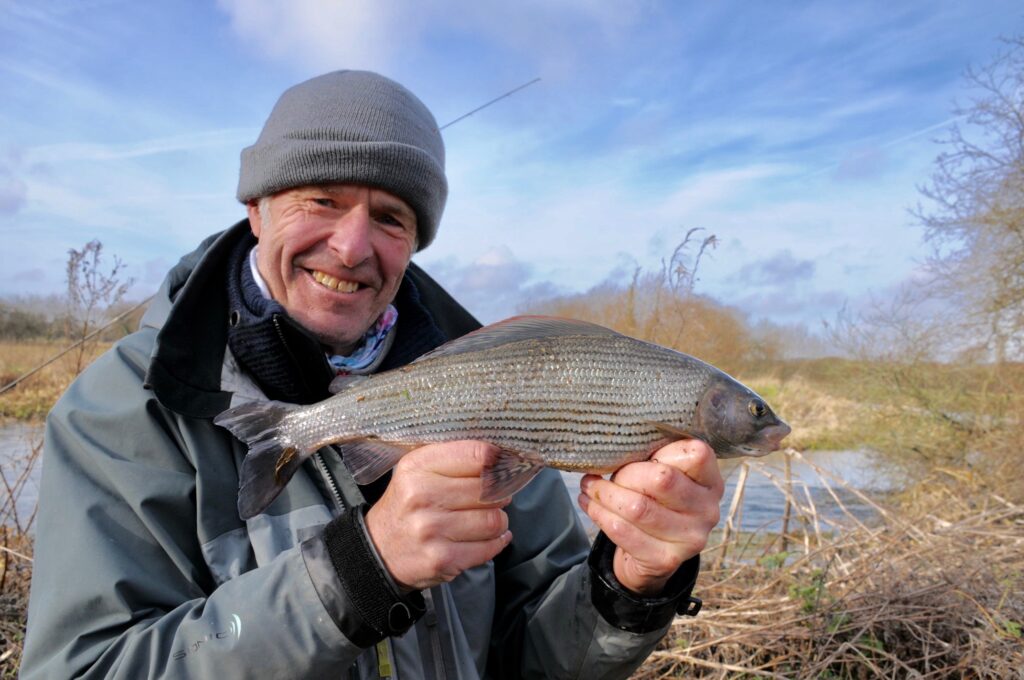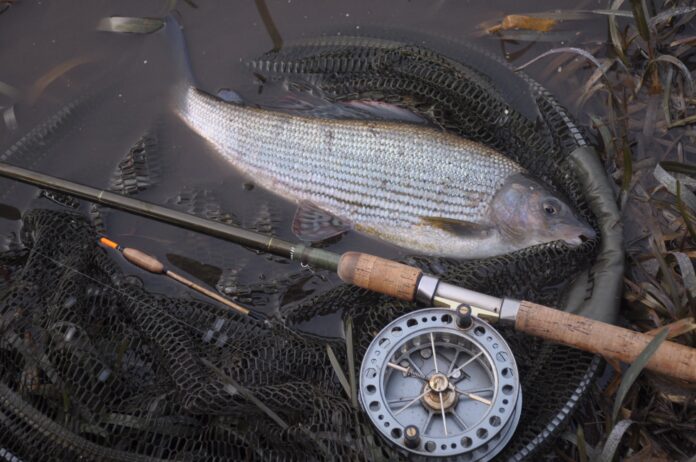I guess this time of the winter many of us will be thinking grayling, either on float or fly. (Personally, I see merit in both and both demand a real measure of skill if you are to do them properly.)
This favourite swim on the Frome I first found way back in 2017 on an exploratory visit to the river. At that time, my largest grayling had been “mere” two pounders, and I had no real experience of how extraordinarily powerful three and four pound fish become. Indeed, this particular first visit, I hooked a fish that ran me over fifty yards and broke me in most spectacular fashion. I had absolutely no chance from start to the finish of the job, about ninety seconds after the fly was taken.
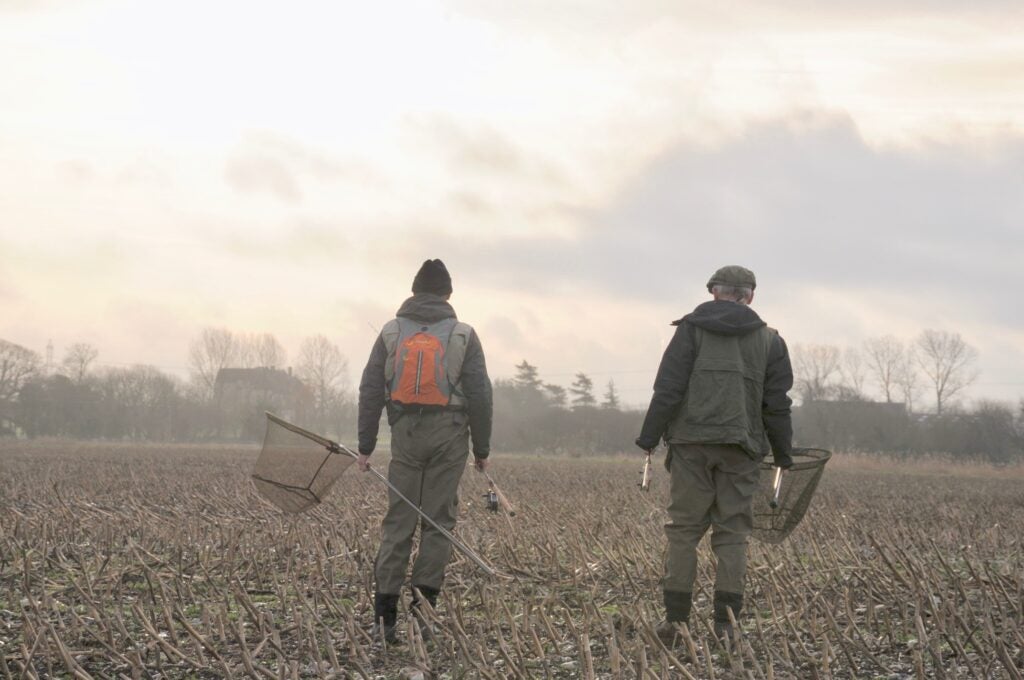

The photographs show friends Simon and Ian walking to the swim, the former playing a fish there, and me with a grayling that was on or around the three mark. Over four years, we fished the run equally with fly and float and for the life of me, I’d struggle to say which method came out on top. The real hero is the swim itself, and I often close my eyes and dream myself back there, preferably on a close, cloudy day with little wind, around 8.00am on a March morning when the river runs at good height with visibility of two feet or so. But what makes this swim so perfect, and why do big grayling inhabit it almost always, as far as we can tell and our experiences lead us to believe?
Depth… a steady four to five feet, about ideal for big grayling in my experience.
Length… this is a big swim for the Frome, and I have paced it at over eighty yards. It is amazing to think my lost monster ran all that way, and was still running when it turned the bottom, left hand bend and disappeared to the sea.
Flow rate… not slow, not quick. A decent speed, but never one to make fishing anything but comfortable. I wish I had remembered how to measure current speed in mph, but my geography lessons were well over half a century ago, and you’ll have to excuse my rule of thumb estimations.
Bed… gravel, sand and odd seams of chalk. Almost always very clean with barely any weed left over from the previous summer.
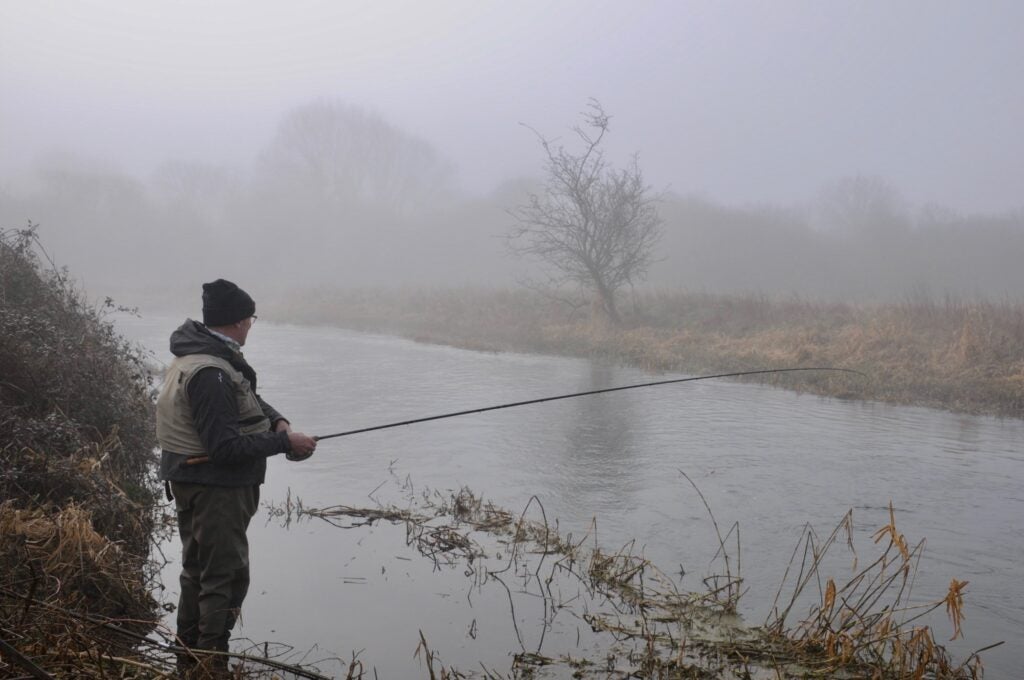

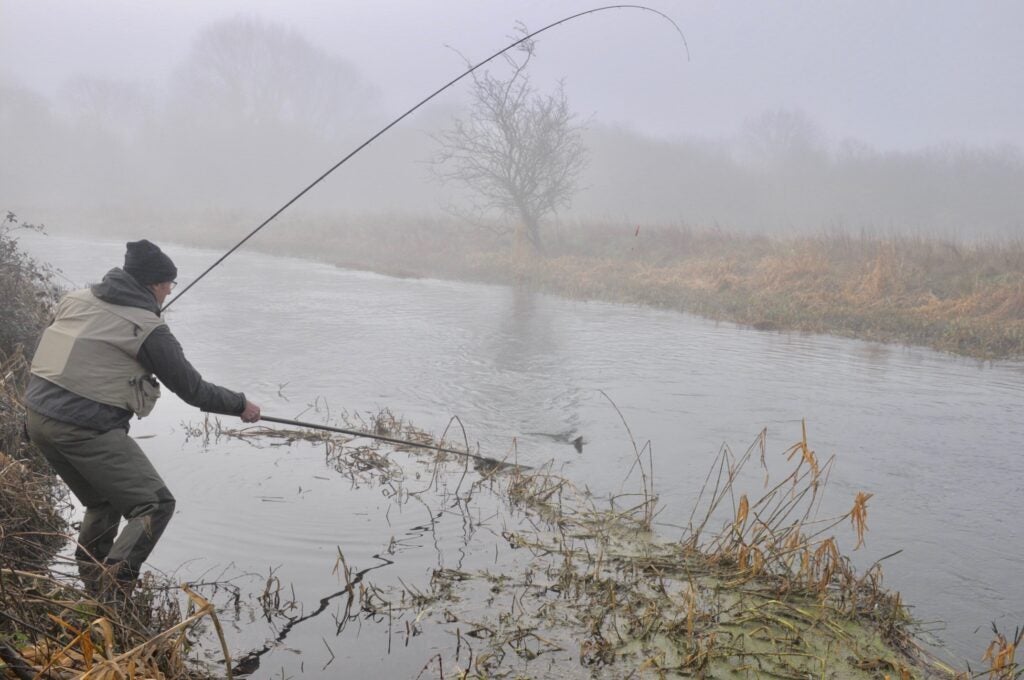

Hotspots… the run is slightly quicker and shallower at its head, and big fish have never come from there. All of them, without exception, have taken at the point where the quicker water slows down just a tad and deepens by around six inches or so. These are minor details but would seem to be critical to catching the biggest fish.
Shelter… prevailing westerlies appear to keep off it and only rarely do you see the surface ruffled. A growth of trees stands on the far bank down the swim, two thirds down the run, and grayling appear to take shelter there early mornings when we have seen hunting cormorants about. A fly fished very close to the branches often, even generally, gets taken.
A word on grayling care… is there a more difficult fish to hold or a more delicate fish to resuscitate? I find that gripping the grayling only leads to increased and prolonged struggles. If you can balance the grayling as shown, then it will rest more easily I have found. I like to let the grayling lie in the net which is placed in the weedy margins. The water must be allowed to flow over it and the grayling must have the ability to swim clear when it is ready. I don’t worry if recuperation takes twenty minutes or more… this only allows the fish to be completely recovered when it enters the river’s current.
